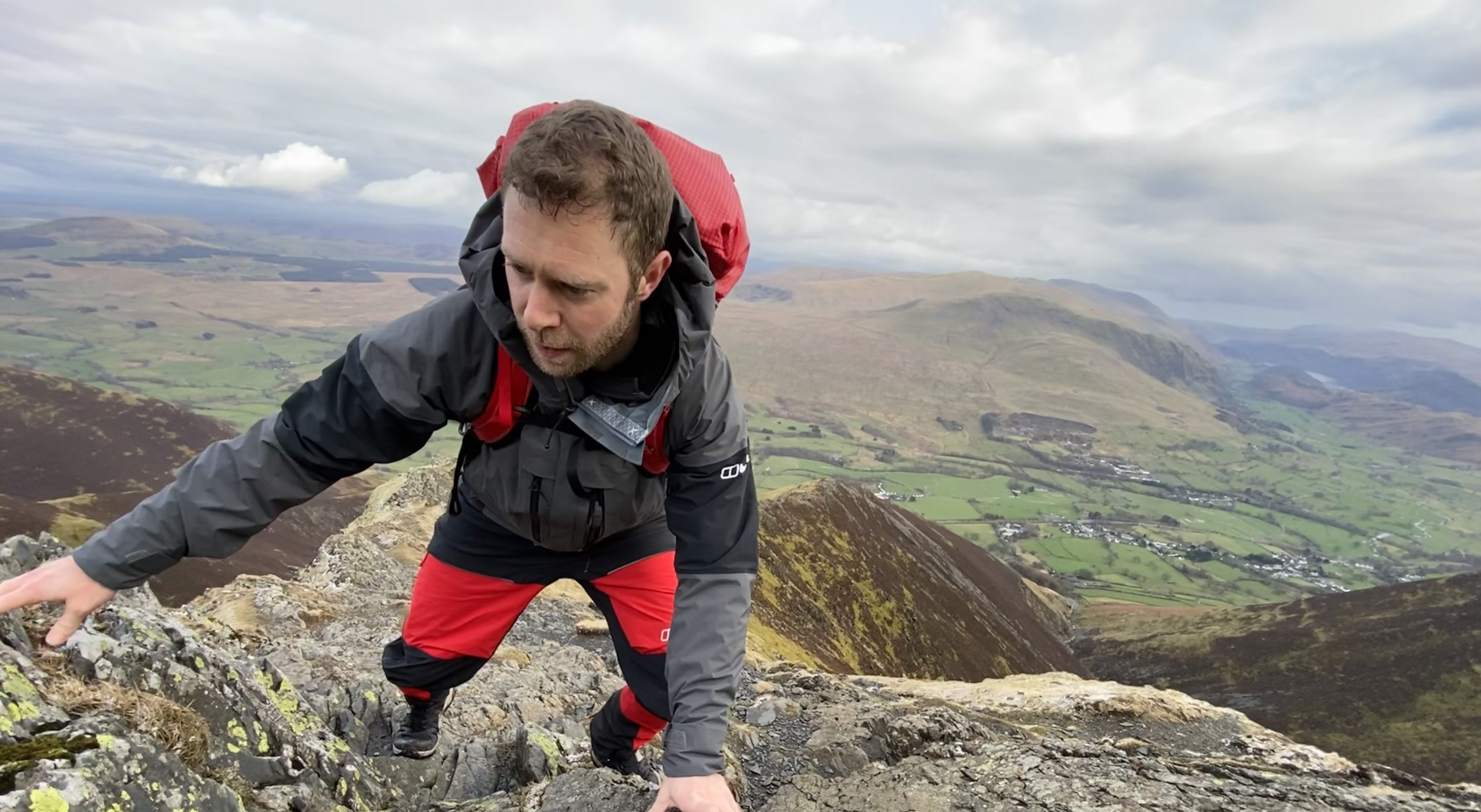
Berghaus MTN Guide GTX Pro Jacket: first impressions
Northern English outdoor brand Berghaus is best known for its mid-range products, and if you head out on a jaunt in any of Britain’s national parks, you’re likely to come across someone sporting the familiar logo on a jacket, fleece, pair of pants or hiking shoes.
However, it's also involved in designing and manufacturing gear for serious mountain professionals. It’s telling that some of Britain’s greatest ever adventurers, including the legendary Chris Bonington, multi-award winning alpinist Mick Fowler and rock (literally) stars of the climbing world Leo Houlding and Anna Taylor are all advocates.
First launched in 1986, Berghaus’ Extrem range represents the brand's flagship gear, designed for the sorts of elite adventurers mentioned above and mountain professionals too. October 2022 saw the latest refresh of the range and its products quickly garnered praise, scooping numerous awards and receiving admiring glances for much more than just for its bold goji red, jet black and pinstripe grey colorways.
As one of the range’s standout products – not to mention one of the most expensive, costing half a grand – I was expecting a lot from the Pro Jacket and it didn’t disappoint. It’s the waterproof jacket at the vanguard of the Extrem range’s ‘Guide’ pillar of products, which are pieces crafted to meet the needs of exacting mountain professionals. Berghaus say the Pro Jacket is an all-rounder that "covers you for all disciplines from Alpinism to SkiMo."
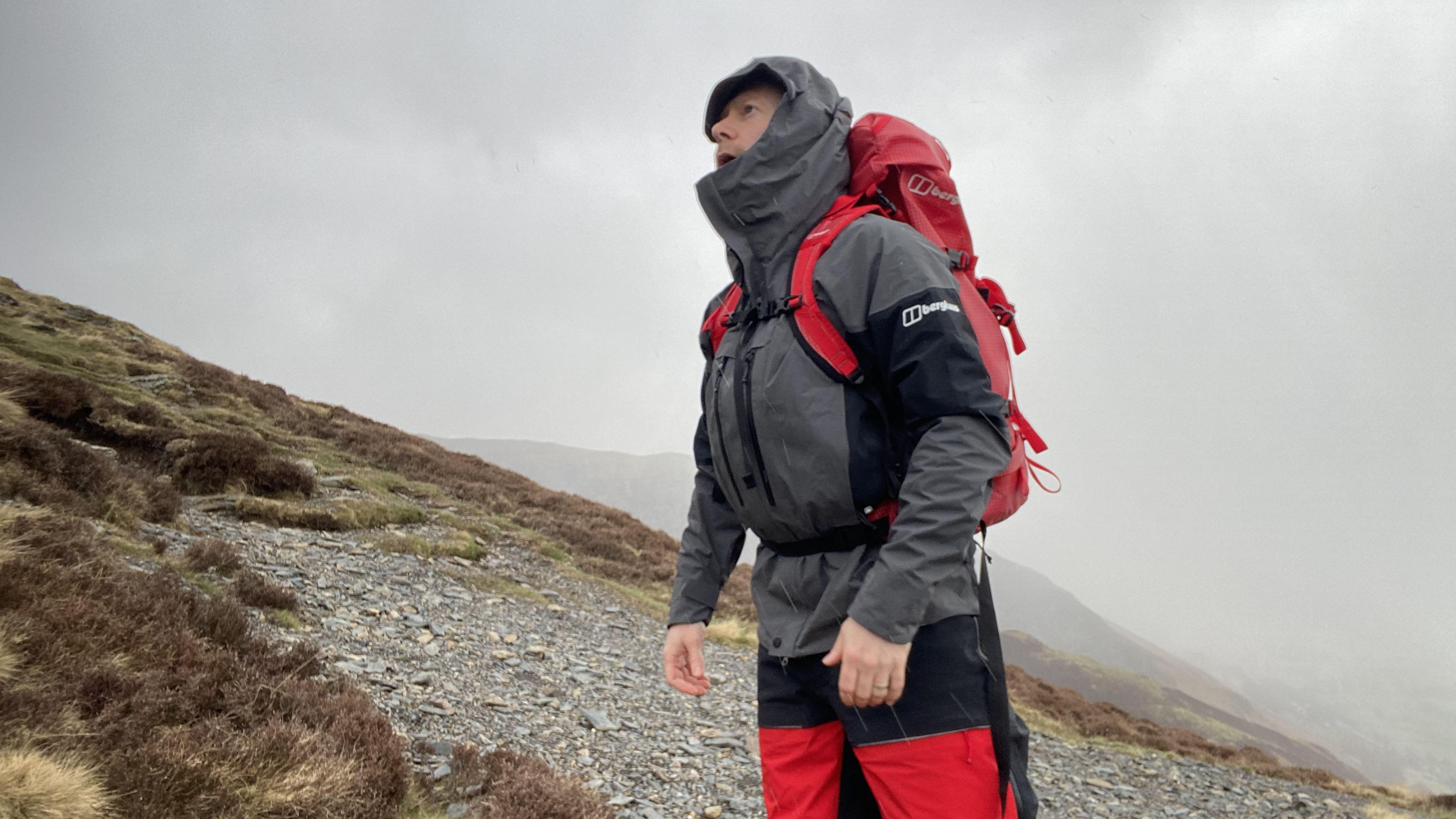
On first inspection, the Pro Jacket oozes premium quality. Its polyamide main fabrics feature a mix of 70 denier Gore-Tex Pro 3L Most Rugged and strategically placed Gore-Tex Pro Stretch panels. There are chunky YKK zippers with ample pulls, spaced Velcro taps along the front zipper’s storm guard and a pleasingly robust feeling popper fastening at the bottom. Everything feels deliberate and emphatically executed. John Hammond’s character from Jurassic Park springs to mind: “We spared no expense.”
To wear, it initially feels quite large and roomy for the size. But, remember, this is a jacket designed for properly brutal mountaineering missions in the sort of conditions where you’d also be wearing multiple mid-layers, including a down jacket, beneath. As a result, it’s not exactly the kind of fitted jacket you’d wear to the pub, unless you were heading to a renowned climber’s establishment, in which case it’d probably gain you some kudos.
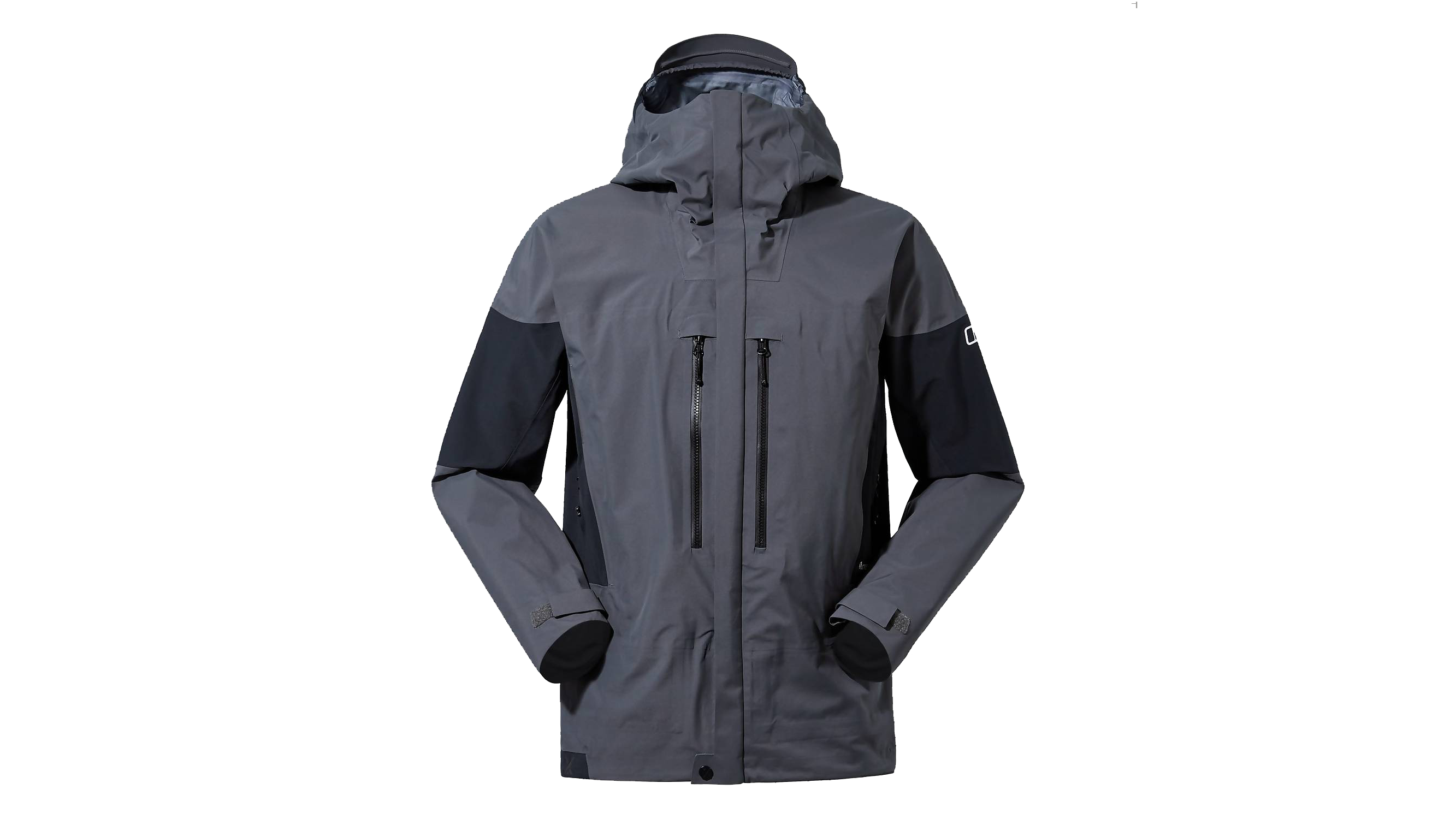
RRP: £500 (UK) / €550 (EU)
Weight: 653g (men’s) / 585g (women’s)
Sizes: XS to 2XL (men’s) UK 8 to 18 (women’s)
Fabric: 100% Polyamide with GORE-TEX PRO Most Rugged 70D and GORE-TEX PRO Stretch 70D
Colors: Goji Berry and Jet Black (men’s and women’s), Grey Pinstripe and Jet Black (men’s only)
Features
The jacket features Gore-Tex Pro Most Rugged, making it hugely hard-wearing – exactly what the doctor ordered for a jacket that’s designed for the most challenging terrain and conditions. On the plus side, it’s resistant to rock abrasion and snags, while on the downside, it’s not as breathable as the standard Gore-Tex Pro.
The same is true for the strategically placed Gore-Tex Pro Stretch panels, which provide durability and freedom of movement in the areas you need it most but, again, it isn’t the most breathable fabric around.
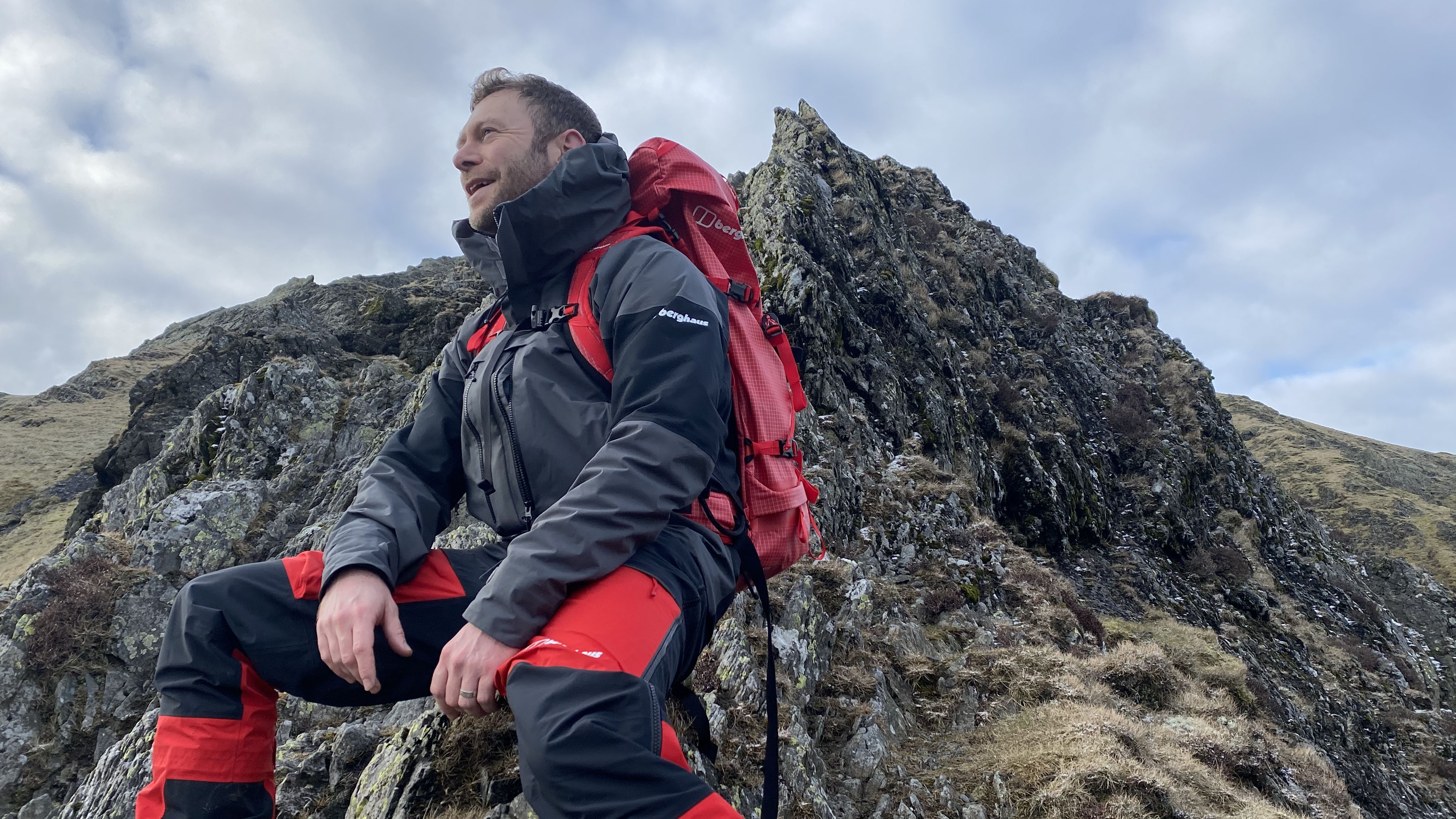
Unsurprisingly, the hood is helmet compatible and features three points of adjustment – one either side and a single-point rear adjustment, which allowed me to adjust the fit easily depending on the conditions. On its front is a strongly wired peak, which aids visibility and I was able to bend it into whatever shape suited the situation best.
There’s no shortage of storage options on the Pro Jacket, with four zippered front pockets, one smaller internal zippered compartment (which we’ll come to in a mo) and two internal mesh pockets. The two higher front pockets are easily accessible even when wearing a backpack’s chest strap and climbing harness. Usefully, the left pocket has a D-ring for attaching important items. These pockets aren’t quite big enough to fit a standard folded topographical map, though an additional fold and you can cram one in.
The larger Napoleon pockets on either side boast loads of space and zip downwards from the top, enabling access when wearing a harness or similar. The internal mesh pockets are designed for dumping skins, though they’re also perfectly sized for holding a map too.

One of the most thoughtful features is the Therma Pocket, which is a thermally insulated zippered compartment designed to hold electronic devices like a phone, headlamp or GPS unit. Freezing conditions will drain a lithium-ion battery much quicker than in summer, especially if the tech is exposed to the cold for extended periods. Having communication and navigational capabilities compromised in a potentially dangerous winter mountain environment is obviously far from ideal. Guides always recommend keeping electronic devices as close as possible to your body’s warmth. Berghaus have taken this a step further with the inclusion of the interior Therma Pocket, which sits snuggly next to the wearer’s left rib cage, thus trapping your radiated warmth for the benefit of your devices.
As well as holding heat in, certain features are designed to do the opposite. To help regulate the wearer’s temperature, the Pro Jacket features pit zips on either side to increase ventilation. On long ascents carrying all the prerequisite winter gear, it’s easy to overheat, even in freezing conditions. Mountaineers always have to strike a balance between staying warm, while not getting overly hot and sweating. Pit zips are one way to address this balance.
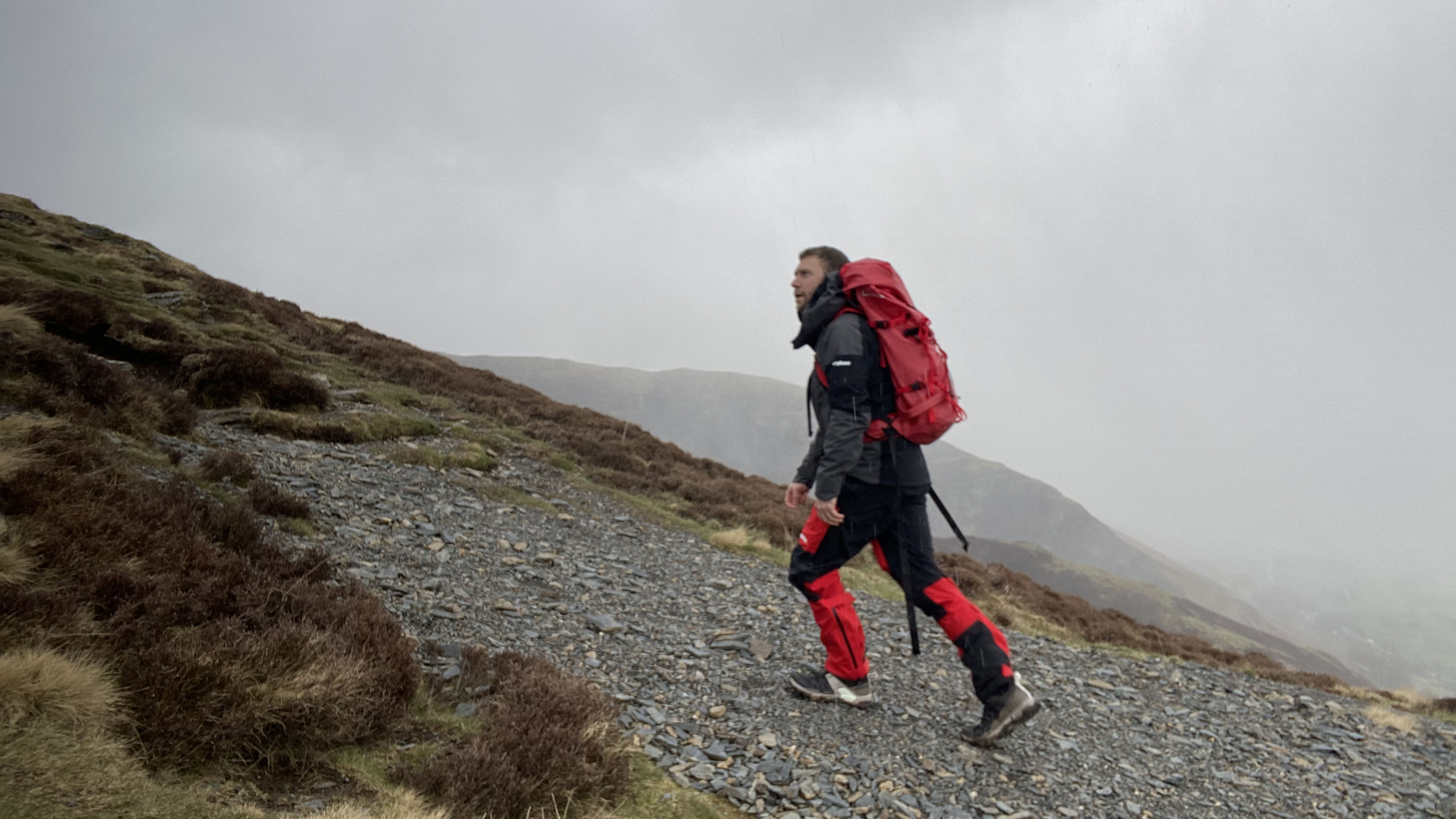
As is de rigueur in mountaineering kit, there’s reflective detail that’ll return the light of a headlamp during alpine starts or long walk outs or, in the worst case scenario, make you nice and visible to a rescue helicopter.
The sleeves are articulated to stop them riding up when arms are outstretched, while Velcro fastenings around the cuffs allowed me to tighten or loosen things. The cuffs are also stepped, meaning there’s additional coverage for the back of the hand. Around the waist, the elasticated dual hem adjustment is easy to manipulate with little pull tabs and one of the adjustment points sits right below one of the reflective Extrem logos, so is easy to find even when its dark.
On the trails
During my early spring test period, I encountered freezing temperatures, ferocious hail and technical scrambling terrain in England’s premier mountain region, the Lake District National Park. Wearing the Pro Jacket (as well as the complimenting Pro Pant), I enjoyed a level of protection way beyond the norm.
With a layering system consisting of a merino base layer, the superb MTN Guide MW Hoody (an award-winning Extrem piece) and the Pro Jacket, I felt totally insulated against the cold wind and any precipitation that came my way. There was room under the jacket for additional layers and I usually carried the MTN Seeker MW Down Hoody in case things got truly Baltic. However, I never quite felt the need, such was the wind repelling quality of the jacket. However, I can well imagine requiring such a setup in colder climes.
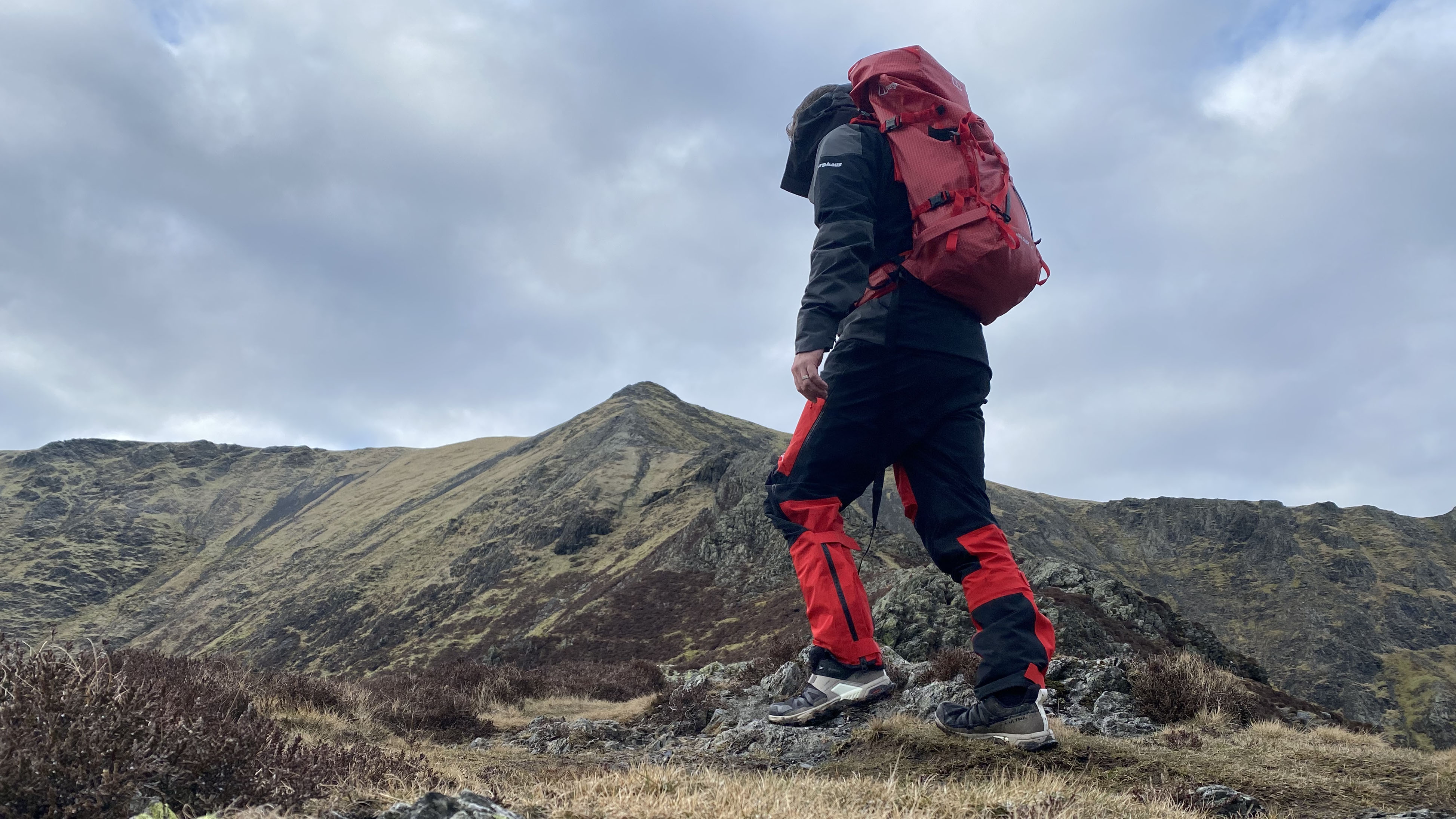
Of course, I didn’t feel quite as light on my feet as I would have in less rugged attire, though I was able to scramble freely, without feeling restricted. Breathability isn’t brilliant, but then I’d simply open the pit zips to stay cool, so it wasn’t a major issue. Having said that, I’m not sure this is the ideal jacket for a wet and muggy August afternoon.
I value the versatility and options provided by the jacket’s several pockets. Having four zippered pockets that are accessible even when wearing a backpack's hip belt is a real boon and I liked having my map, compass and snacks within easy reach while on the go. Despite being out a few times for several hours in below freezing conditions, I had no issues with my phone or head torch's batteries draining, both of which I stowed away in the insulated Therma Pocket for safe keeping.
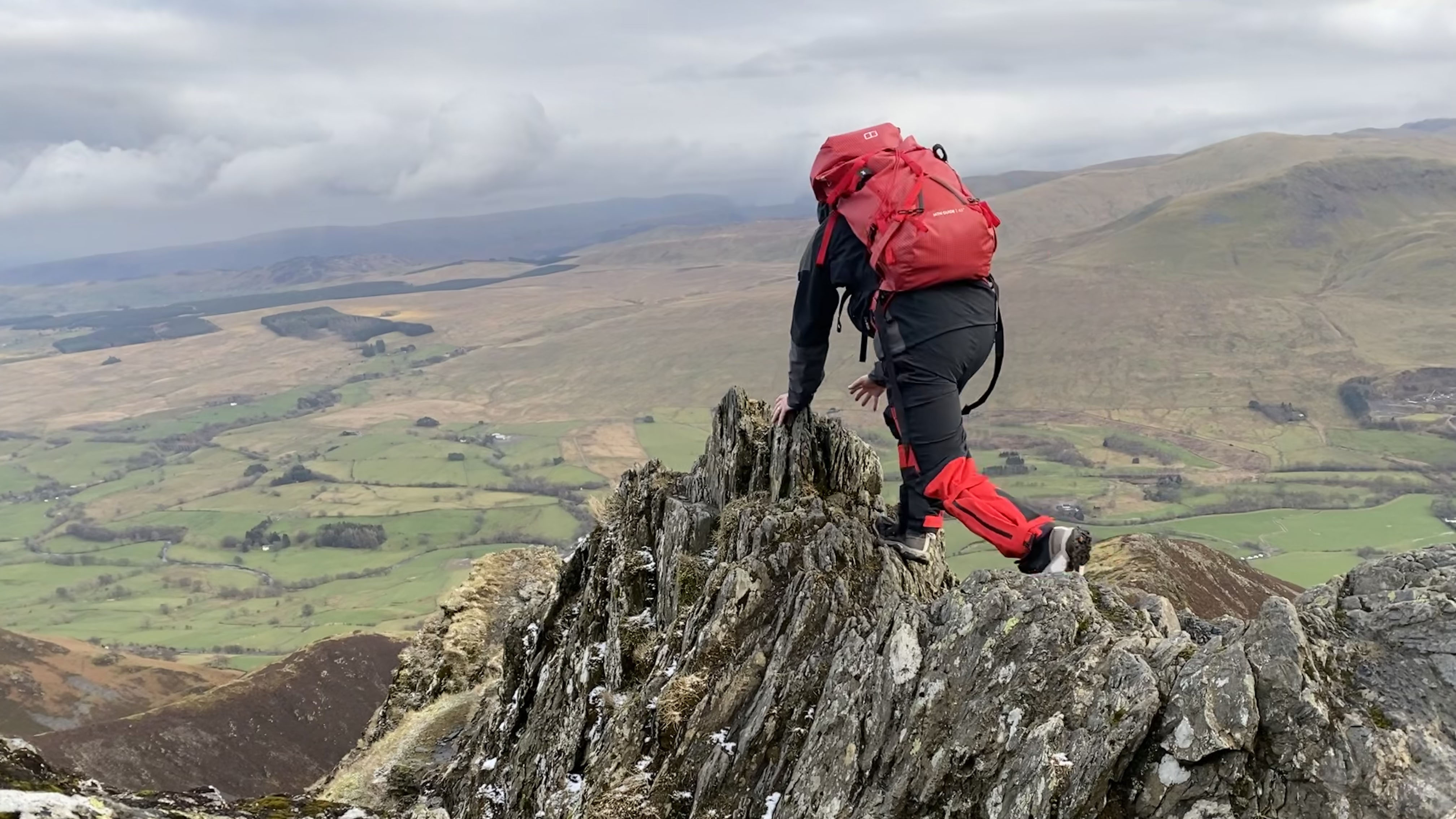
A jacket designed for alpine environments is nigh on useless if you can’t manipulate its zips, tabs and other adjustments using thick winter gloves. Fortunately, the Pro Jacket makes use of large components and pulls; I found making any adjustments relatively easy, even with a fairly heavily insulated pair of hiking gloves.
I’m looking forward to taking the Pro Jacket to places like the Alps and Scotland in the depths of winter, where the conditions will really push it more towards its limits. However, the Lake District delivered its own cocktail of freezing temperatures, hailstorms, chilling winds and rain. Thus far, the Pro Jacket has batted these conditions away easily and, for a waterproof jacket, that’s the main thing I’m looking for.







